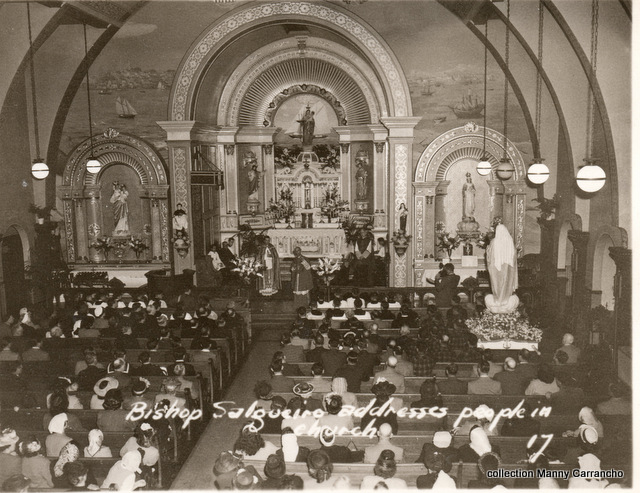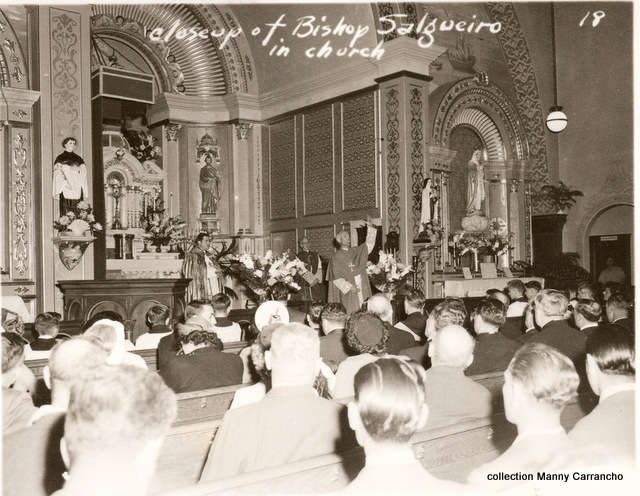Day: May 15, 2016
GHS SOFTBALL vs Salem
GHS girls win easily in game with Salem. One of the highlights was rare triple play by the Fishermen.
SHADBLOW, SHADBUSH, CHUCKLEBERRY TREE, SERVICEBERRY, JUNEBERRY…
Shadblow blooming with Red-winged Blackbird coming in for a landing
Male Yellow Warbler hopping through the Shadblow branches eating small insects
Shadbow, Shadbush, Chuckleberry Tree, Serviceberry, and Juneberry are just a few of the descriptive names given the beautiful Shadblow tree lighting up our marsh and woodland edges. With lacey white flowers, Shadblow (Amelanchier canadensis) is one of the first of the natives to bloom in spring, growing all along the Atlantic coastal plains.
A fantastic tree for the wild garden, over 26 species of songbirds and mammals, large and small, are documented dining on the fruits of Shadblow (including bears). The small blue fruits are delicious, though rarely consumed by people because wildlife are usually first at the table. The foliage of Shadblow is a caterpillar food plant for the Red Admiral Butterfly. Look for her eggs on the upper surface at the tip of the leaf.
Shadblow in bud at the water’s edge with dewdrop necklace
Fruiting in June at the same time of year as the annual spawning migration of shad, is how the names Shadblow and Juneberry came about. The common name Serviceberry is derived from the flower clusters gathered for use in church services.
 Shadblow in bloom Loblolly Cove
Shadblow in bloom Loblolly Cove
The Shadblow and reeds create a beautiful symbiotic habitat for the blackbirds, Grackles and Red-wings, especially. Reeds of cattails and phragmites make ideal nesting material and sites, and come June, above the nesting area, a songbird feast of Shadblow berries ripens.

 Male Common Grackles nest building in reeds
Male Common Grackles nest building in reeds
 Female Red-winged Blackbird perched on cattail while collecting fluff for her nest and calling to her mate.
Female Red-winged Blackbird perched on cattail while collecting fluff for her nest and calling to her mate.
NEW VIDEO: COME SAIL IN THE 4th ANNUAL SCHOONER CHALLENGE!
“What happens in this race anyhow?” Racing, of course, with some cheating too (as revealed in the video), along with photo competitions, songwriting contest, creative knot tying, and much more! Everyone is welcome to participate, but hurry and sign up today because tickets are going fast.
Check out this super fun video from Barry O’Brien, featuring our Gloucester Captains Tom and Heath Ellis of the Schooner Thomas E. Lannon, Captain Stefan Edick of the Schooner Adventure, and Captain Harold Burnham of the Schooner Ardelle.
JOIN THE 4th ANNUAL SCHOONER CHALLENGE! Monday, June 6th, 6 to 8 pm. The Schooners Adventure, Lannon, and Adelle join forces to help us to protect and preserve the Schooner Evelina M. Goulart here at the shipbuilding museum. Schooners sail from The Maritime Gloucester dock on Harbor Loop. More fun than you can imagine. Sign up at www.essexshipbuildingmuseum.org, or call Marcia at (978) 375-3337 today! Tickets will sell fast!
Video by Barry O’Brien, with footage lent by Marty Luster
Lilacs


When Lilacs Last in the Door-Yard Bloom’d by Walt Whitman, is, in my very humble opinion, one of the greatest works ever produced by an American poet. At first reading, it is an exquisite elegy for Abraham Lincoln who was loved by Whitman and whose assassination shattered the poet. Slowly and carefully reading (preferably aloud) the poem’s 200-plus lines reveals a greater and deeper treasury of meaning through a rich orchestration of poetic devices.
I first encountered Lilacs in about 1960 while attending Long Island University in Whitman’s hometown of Brooklyn, NY. My teacher was Professor Scott (I don’t remember his first name) who, like the Robin Williams character in Dead Poets Society, brought Whitman alive for me and made him my life-long companion.
If you’ve never read Lilacs, or if you’ve not read it since college, give it a go.
Here it is:
http://www.poetryfoundation.org/poems-and-poets/poems/detail/45480
Clouds and Magnolia Pier

Don’t miss out on the best brunch…
If you haven’t been to Foreign Affairs in Manchester you don’t know what you’re missing ESPCIALLY for Brunch!
The infamous Bloody Mary bar!
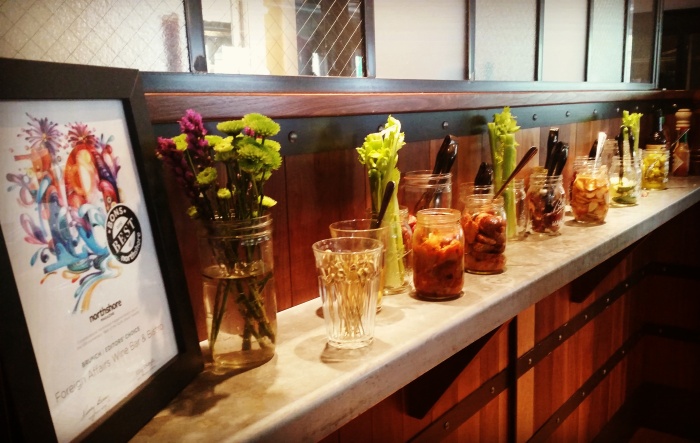 Tyler was feeling southern with some chicken n’ waffles
Tyler was feeling southern with some chicken n’ waffles

I couldn’t resist the Fried Oyster Benedict

Seriously get there ASAP! You won’t be disappointed! Chef Ryan and team are Unbelievable!
Sliders at Willow Rest OMG OMG

There is a three day science meeting I go to in a secret location on Cape Ann. I go to all three days because Willow Rest caters it. Rubber Duck gains three pounds.
“Stuck in the middle”
Ed Touchette in group show Rocky Neck Cultural Center
Ed writes: “The comments included below reflect understandings of my recent work that I’d like to share.”
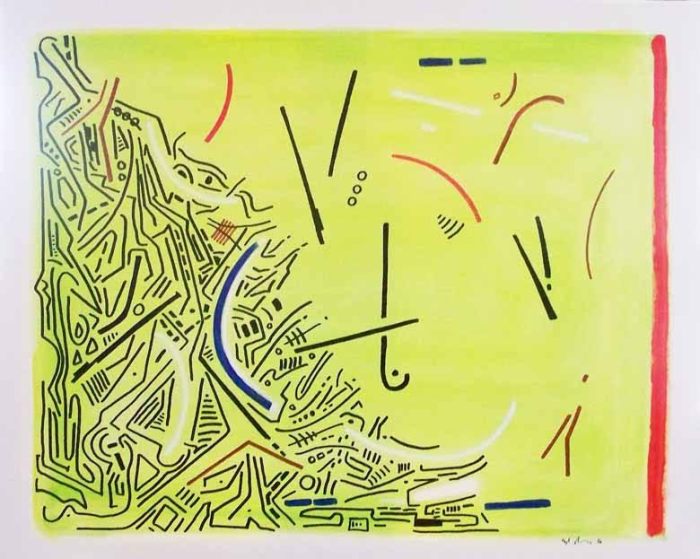
Day Sailors, 2016, acrylic/ canvas, 24 ” x 30 ”
“Why Abstract: The Art of Imagination” – “The show is generally strong, and several works, especially those from Maria Malatesta and Ed Touchette, are unforgettable. Malatesta’s two “Field” series paintings (#26, #27), acrylic on paper, are full of air and atmosphere. The canvases don’t “abstract” the image of a field of flowers, but capture a field as if it were made of the stuff we breathe. We recognize that it’s a field, but we could also inhale it, almost hear it. Touchette’s two acrylics, “Phototaxis” and “Day Sailors,” invite interpretation. Bold lines describe something — something elusive. A bright color highlights. The titles intrigue. There is meaning, or suggestions, and we are invited to offer our ideas.” – Keith Powers, reviewing 3 abstract group exhibits for Cape Ann Beacon on view at the Rocky Neck Cultural Center, Trident Gallery and Flat Rocks Gallery.
“Why Abstract: The Art of Imagination” was reviewed by Keith Powers in today’s Cape Ann Beacon. I particularly was drawn over to Ed Touchette‘s piece almost expecting to find my secret location on land pushed against the sea currents navigating the shoreline. Maps of our existence of place or a dance with the China trade? I may have flown over and sailed through this place at one time. The piece has certainly pulled on my imagination. Look deeper and there is more.” – Jo Ann Castano
“Why Abstract: The Art of Imagination” continues through the end of May at the cultural center on Rocky Neck.

Part 6 Manny Carrancho shares treasured photos Madonna statue carried from Gil Eannes at State Pier to Our Lady
Gloucester Smiles-241
Lift off
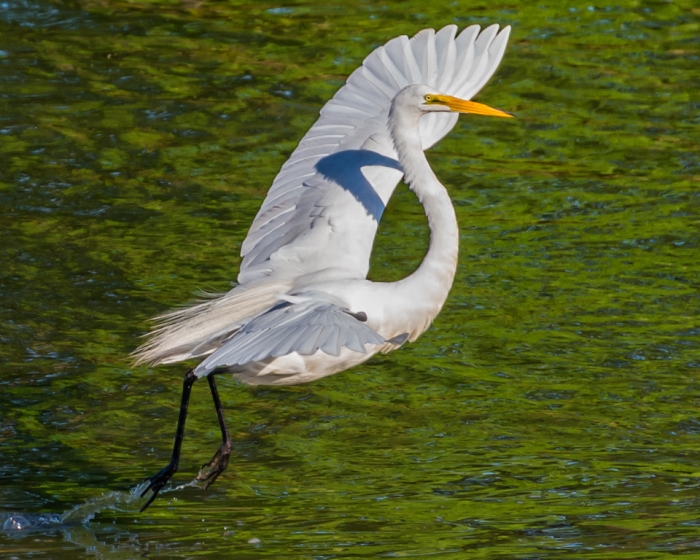
I drive by the Mill River a zillion times a day and I can’t drive by without seeing if it’s low tide and maybe the Egrets are hanging out. It’s awesome to see they are all back for the summer!
@LatFortyThree Sushi
More Cape Ann Dining News-www.capeanneats.com














































